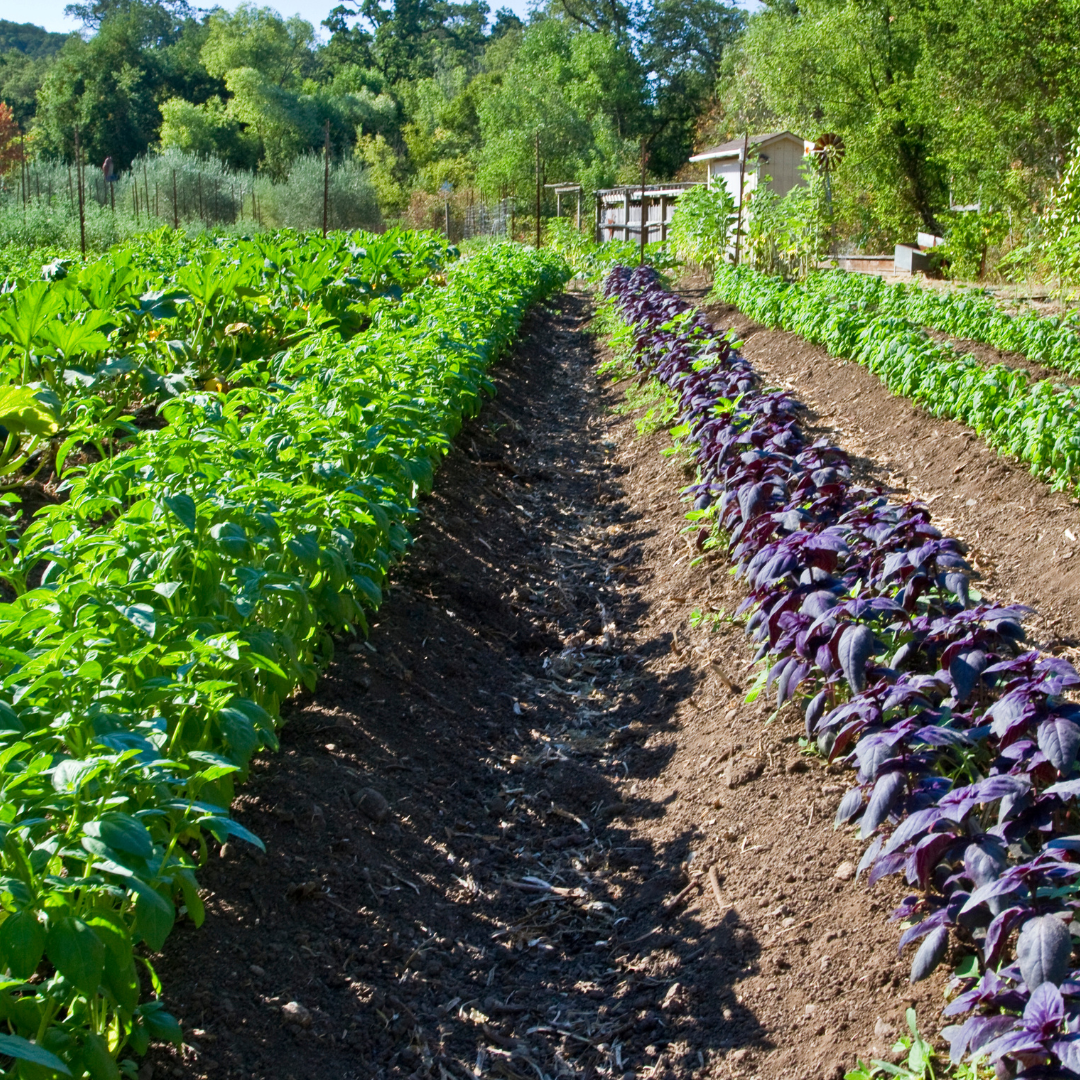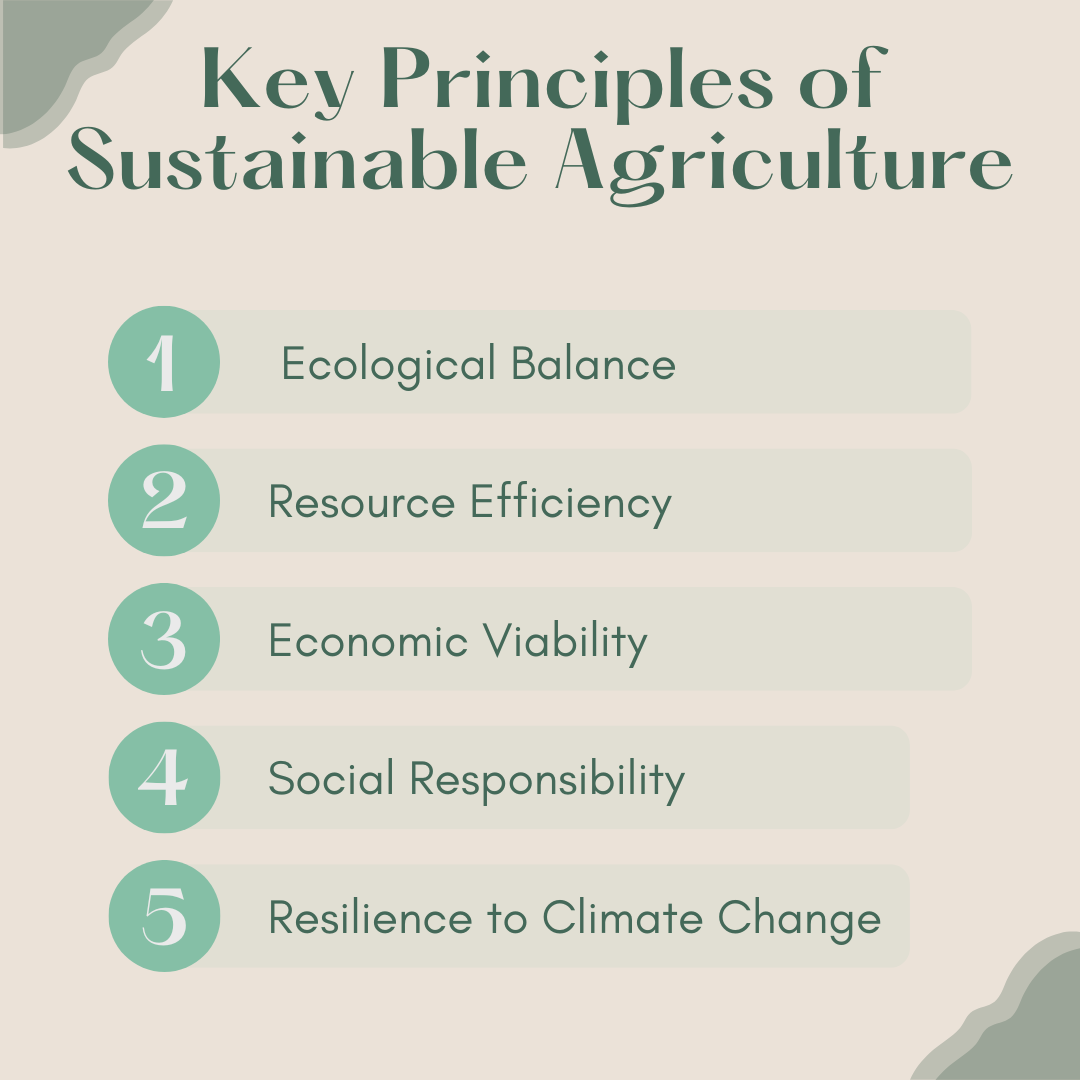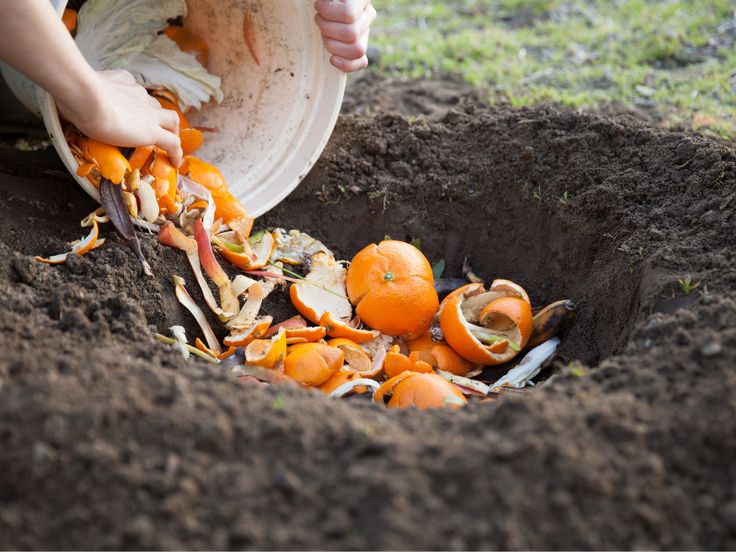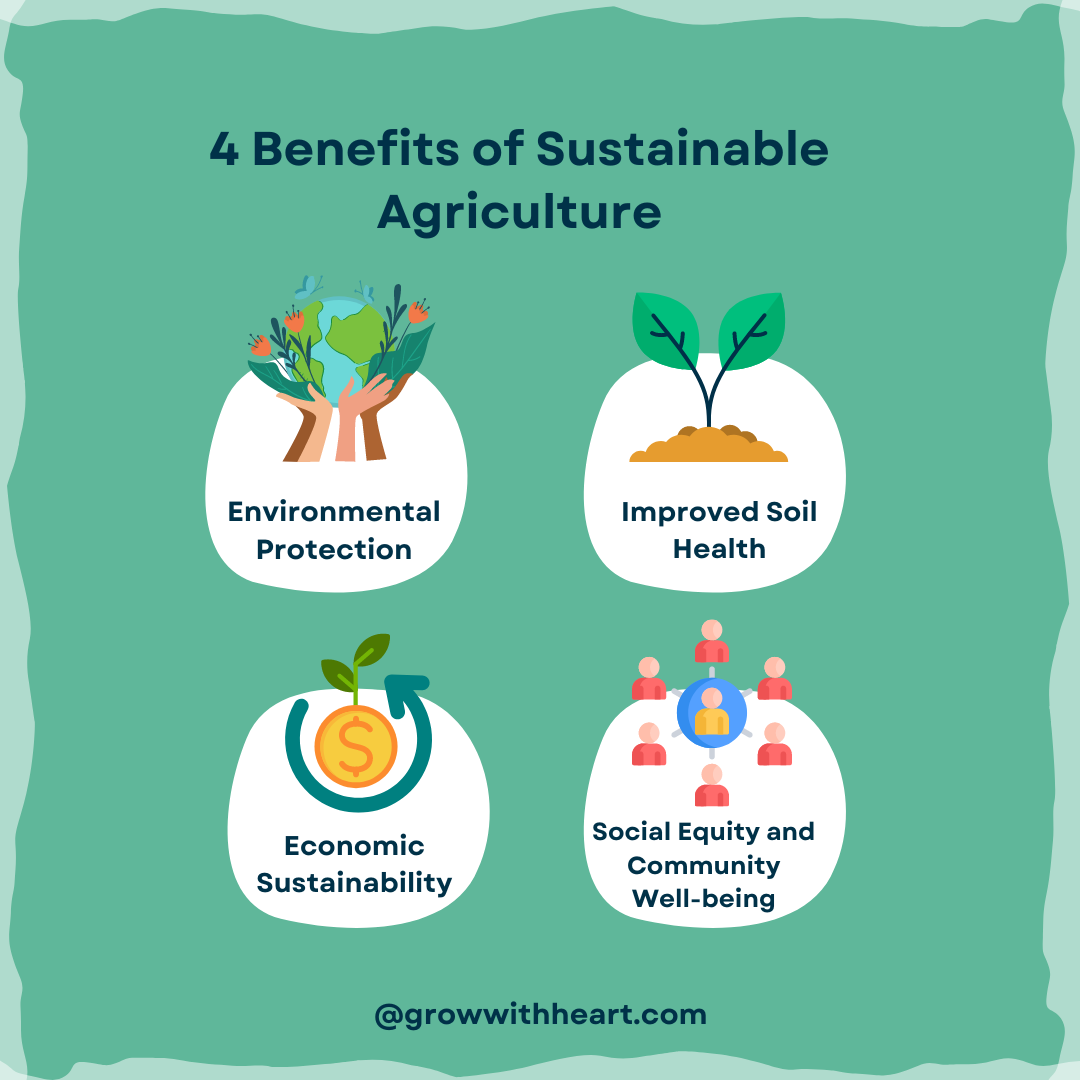Introduction
Sustainable agriculture is more than just a buzzword in today’s world. It represents a profound shift in how we think about farming and food production. As the global population continues to rise, there is an increasing demand for food.
Traditional farming methods, however, often lead to soil degradation, water scarcity, and environmental pollution. Sustainable agriculture offers a solution by promoting practices that maintain the health of the land, preserve natural resources, and ensure food security for future generations.

In this article, we’ll explore the key principles and practices of sustainable agriculture, delving into what makes it essential for the future of farming.
What is Sustainable Agriculture?
Sustainable agriculture is a holistic approach to farming that emphasizes the long-term health and productivity of the land. Unlike conventional agriculture, which often prioritizes immediate yields, sustainable farming focuses on maintaining a balance between productivity and environmental stewardship.

This means using resources efficiently, reducing waste, and minimizing environmental impact. Ultimately, the goal is to create a farming system that can endure for generations without depleting natural resources or harming ecosystems.
Key Principles of Sustainable Agriculture
To understand sustainable agriculture, it’s important to grasp the foundational principles that guide it. These principles are interconnected, each playing a vital role in ensuring the sustainability of farming practices.

1. Ecological Balance
One of the core principles of sustainable agriculture is maintaining an ecological balance. This involves working with nature rather than against it.
For example, farmers are encouraged to use practices like crop rotation and polyculture, which mimic natural ecosystems. By doing so, they can reduce the need for chemical inputs, such as pesticides and fertilizers, and enhance biodiversity on their farms.
2. Resource Efficiency
Sustainable agriculture prioritizes the efficient use of resources, particularly water, soil, and energy. Water conservation techniques, such as drip irrigation and rainwater harvesting, help minimize water use.
Similarly, soil management practices like cover cropping and reduced tillage maintain soil health, ensuring that it remains fertile and productive over the long term. Energy efficiency is also crucial, with a focus on reducing the carbon footprint of farming operations through the use of renewable energy sources.
3. Economic Viability
For agriculture to be truly sustainable, it must also be economically viable. This means that farming practices should be profitable enough to support farmers and their communities.

Sustainable agriculture encourages the diversification of crops and livestock, which can reduce economic risks and increase resilience.
Additionally, it promotes fair trade practices and local food systems, which can provide farmers with more stable and equitable income.
4. Social Responsibility
Sustainable agriculture is not just about the environment; it’s also about people. Social responsibility involves ensuring that farming practices are fair and equitable, providing decent working conditions and fair wages for farmworkers.
It also emphasizes the importance of community involvement and knowledge sharing, enabling farmers to learn from each other and work together to achieve common goals.
5. Resilience to Climate Change
Climate change poses a significant threat to agriculture, with more frequent and severe weather events, changing growing seasons, and increased pest pressures.

Sustainable agriculture builds resilience by promoting practices that can adapt to these changes. For instance, agroforestry (integrating trees into farming systems) can help stabilize the climate, protect soil, and provide additional income streams.
Additionally, selecting crop varieties that are more tolerant of drought or heat can help ensure food production remains stable in the face of climate variability.
Key Practices of Sustainable Agriculture
Now that we’ve covered the principles, let’s look at some of the key practices that are commonly used in sustainable agriculture. These practices are diverse and can be adapted to different farming contexts, from small family farms to large commercial operations.
1. Crop Rotation and Diversity
Crop rotation involves growing different types of crops in the same area across different seasons or years. This practice helps prevent soil depletion and reduces the buildup of pests and diseases that can occur when the same crop is grown continuously.

Crop diversity, or polyculture, involves planting multiple crop species together or in proximity. This approach can enhance biodiversity, improve soil health, and increase resilience to pests and diseases.
2. Organic Farming
Organic farming is a method of sustainable agriculture that avoids the use of synthetic pesticides, fertilizers, and genetically modified organisms (GMOs). Instead, it relies on natural inputs and processes, such as composting, biological pest control, and organic fertilizers.

Organic farming also emphasizes the health of the soil, often using practices like crop rotation, cover cropping, and reduced tillage to maintain and improve soil fertility.
3. Agroforestry
Agroforestry integrates trees and shrubs into agricultural systems, creating a more diverse and resilient landscape. Trees can provide multiple benefits, such as shade for crops, habitat for wildlife, and protection against soil erosion.

Additionally, they can sequester carbon, helping to mitigate climate change. Agroforestry systems can also diversify farm income by producing timber, fruits, nuts, and other tree-based products.
4. Conservation Tillage
Conservation tillage is a practice that minimizes soil disturbance by reducing or eliminating plowing and tilling. This helps preserve soil structure, reduce erosion, and maintain soil moisture.
No-till farming, a type of conservation tillage, leaves crop residues on the field after harvest, which can improve soil health and reduce the need for chemical inputs.

By maintaining a cover of organic matter, conservation tillage can also help sequester carbon in the soil, contributing to climate change mitigation.
5. Integrated Pest Management (IPM)
Integrated Pest Management (IPM) is an approach that combines different strategies to manage pests more sustainably.

Instead of relying solely on chemical pesticides, IPM uses a combination of biological control (using natural predators), cultural practices (such as crop rotation), and mechanical methods (like traps and barriers) to control pest populations.
This reduces the reliance on harmful chemicals and can lead to more resilient farming systems.
6. Water Conservation Techniques
Water is a critical resource in agriculture, and sustainable practices emphasize its efficient use. Techniques like drip irrigation, which delivers water directly to the roots of plants, can significantly reduce water waste. Rainwater harvesting involves collecting and storing rainwater for use during dry periods, helping to ensure a steady water supply.

Additionally, mulching can reduce water evaporation from the soil, further conserving this vital resource.
7. Composting and Organic Waste Management
Composting is the process of recycling organic waste, such as crop residues, manure, and food scraps, into nutrient-rich compost that can be used to improve soil fertility.

This practice reduces the need for synthetic fertilizers and helps manage farm waste in an environmentally friendly way. By returning nutrients to the soil, composting supports the land’s long-term productivity.
The Benefits of Sustainable Agriculture
The adoption of sustainable agriculture practices offers numerous benefits, not only for farmers but also for society as a whole. Let’s explore some of the key advantages.

1. Environmental Protection
One of the most significant benefits of sustainable agriculture is its positive impact on the environment. By reducing the use of chemical inputs, promoting biodiversity, and conserving natural resources, sustainable farming helps protect ecosystems and reduce pollution.
Additionally, practices like conservation tillage and agroforestry can sequester carbon, helping to mitigate climate change.
2. Improved Soil Health
Sustainable agriculture practices, such as crop rotation, cover cropping, and composting, contribute to healthier soils. Healthy soil is rich in organic matter and nutrients has good structure, and is better able to retain moisture.
This not only improves crop yields but also enhances the resilience of the farming system to extreme weather events.
3. Economic Sustainability
For farming to be sustainable, it must be profitable. Sustainable agriculture can enhance economic sustainability by reducing input costs, diversifying income sources, and improving market access through practices like organic certification and participation in local food systems.
Additionally, by building resilience to climate change and other external shocks, sustainable farming practices can help ensure long-term economic viability for farmers.
4. Social Equity and Community Well-being
Sustainable agriculture also has a social dimension, promoting fair and equitable treatment of farmworkers, supporting rural communities, and enhancing food security.
By encouraging practices like fair trade and local food systems, sustainable agriculture helps build stronger, more resilient communities. Furthermore, reducing the environmental impact of farming contributes to a healthier living environment for both farmers and consumers.
Challenges and Opportunities in Sustainable Agriculture
While sustainable agriculture offers many benefits, it is not without its challenges. Transitioning from conventional to sustainable practices can be difficult, particularly for small-scale farmers who may lack the resources or knowledge to make the change.
Additionally, sustainable practices often require more labor and management, which can increase costs and reduce profitability in the short term.

However, there are also significant opportunities in sustainable agriculture. The growing demand for organic and sustainably produced food presents new market opportunities for farmers.
Moreover, advances in technology, such as precision farming and renewable energy, can help make sustainable practices more efficient and cost-effective. By investing in research, education, and support for farmers, we can help overcome the challenges and unlock the full potential of sustainable agriculture.
Conclusion
Sustainable agriculture is essential for the future of farming. By embracing the key principles and practices of sustainability, farmers can protect the environment, improve soil health, enhance economic viability, and promote social equity.
While there are challenges to overcome, the opportunities for sustainable agriculture are vast.
As we move forward, it’s crucial that we continue to support and promote sustainable farming practices, ensuring that agriculture remains a viable and sustainable way of life for generations to come.

Pingback: The Future of Sustainable Agriculture: Trends and Innovations -
Pingback: The Role of Water Conservation in Sustainable Agriculture
Pingback: Water Management Strategies for Sustainable Agriculture
Pingback: Understanding the Economics of Value-Added Agriculture